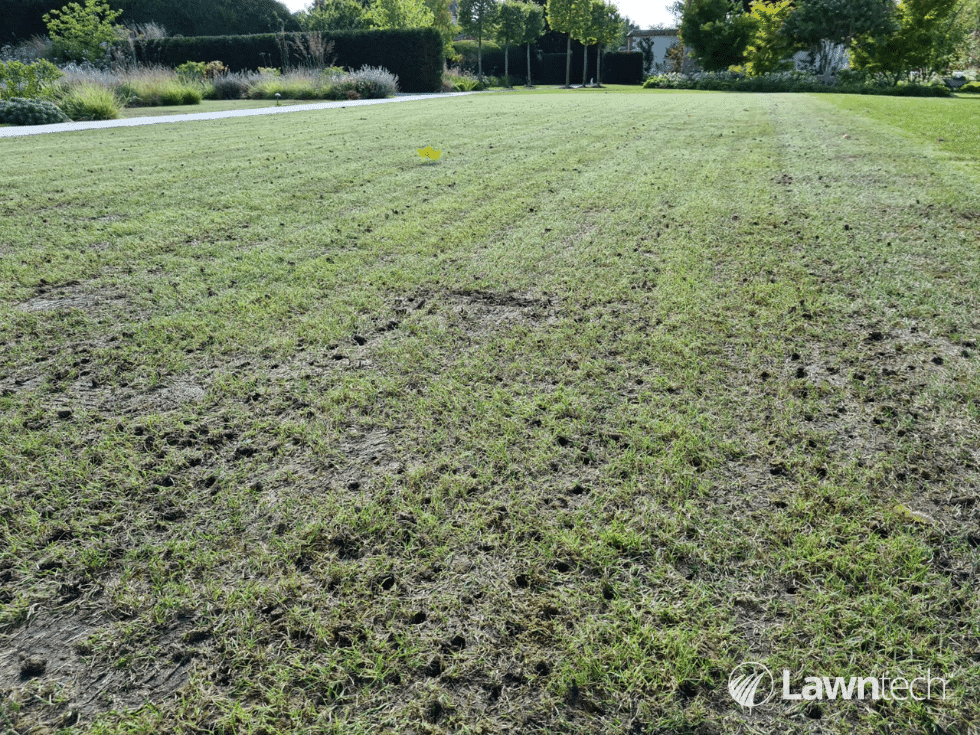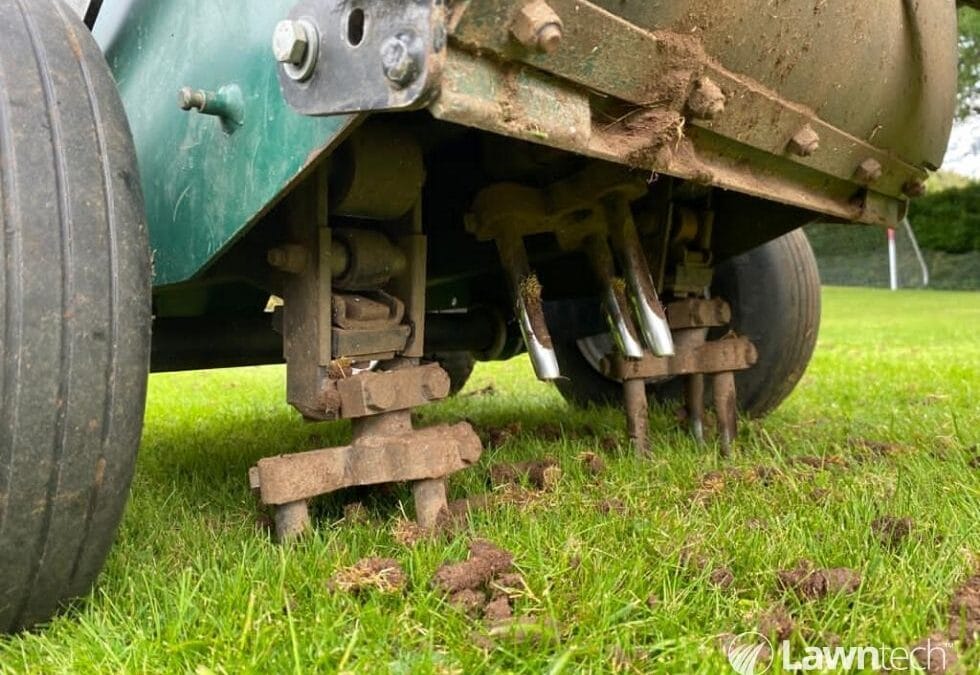During the spring and autumn or anytime when soil conditions are soft, one of the best things we can do to breathe life into our lawns is to pep it up by aerating it. Creating thousands of holes into the soil, will benefit the lawn in a number of ways:
- By relieving compaction of the soil
- Enabling water to get into the root zone
- Enabling nutrients into the root zone
- Enabling air into the root zone
- Pruning the grass roots
- Improving drainage
- Encouraging biological activity
- Enabling toxic chemicals to leech away
- Penetrating thatch below the surface
- Reducing infestation of moss
It’s amazing what a network of little holes can do for a lawn, and with a machine it’s a lot easier than doing it by hand with a garden fork.
When is the best time to aerate a lawn?
Aeration can be carried out at almost any time of the year, except for when the ground is too hard either by being frozen or dried out, or when the ground is waterlogged. Our preference is to aerate in autumn or spring. In fact, we go so far as to say that every lawn will benefit from being aerated at least once every year. It makes a perfect accompaniment to ensure the lawn is able to fully absorb the treatments applied from an Annual Lawn Care Programme.
How deep should the holes be when I aerate the lawn?
The deeper and more plentiful the better, and we recommend a depth of at least 125mm, but be sure to avoid any pipes or cables which have been laid under the lawn.

This network of thousands of holes will help the lawn breathe and take in air and moisture, along with a long list of other benefits.
Which is best – Hollow Tine or Solid Tine Aeration?
The lawn care industry is divided on this subject, and both methods have distinct pros. Lawntech uses hollow tine aeration wherever possible. The hollow tines remove plugs of soil from the ground and by doing so prune the roots of the grass promoting new growth, whilst aggressively depositing the cores on the surface. This means that the holes left behind stay in place and take a lot longer to be filled in than is the case with solid tines. Since the solid tines only move the soil around rather than removing it, the holes created will be filled back in again much sooner than with hollow tines, however this process is still beneficial because is relieves surface compaction whilst creating a pathway for moisture and nutrient to enter deeper into the soil . Another good reason to use spiked aeration is when the lawn is on a base of heavy clay soil. In this instance, solid tines are the weapon of choice because they create less mess on the surface of the lawn from the clay cores .
What happens to the plugs of soil removed by hollow tine aeration? Will their nutrients be lost with them?
The plugs of soil lay on the surface of the lawn, where they eventually ‘melt’ back into the ground over time, usually a few weeks. Rainfall helps in this process, as you can imagine. This means that the nutrients which have been removed will not be lost, simply returned to the soil over time.
If you feel that aeration is something you can carry out yourself, please see our dedicated webpage here for more details:
https://www.lawn-tech.co.uk/blog/maintenance/lawn-aeration-advice/
Alternatively, if you would like Lawntech to take care of this for you, please Contact Us here:



